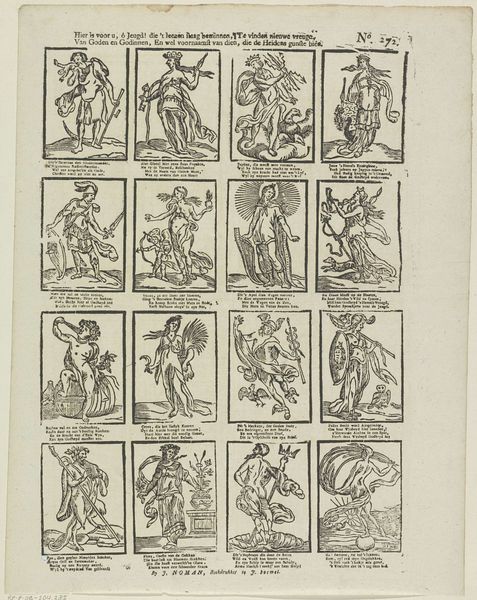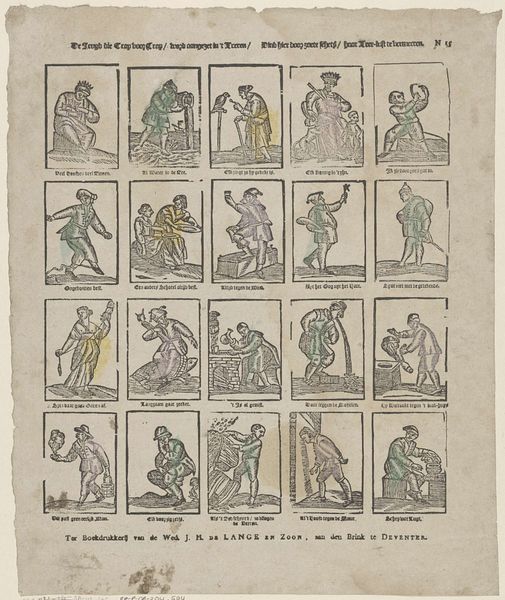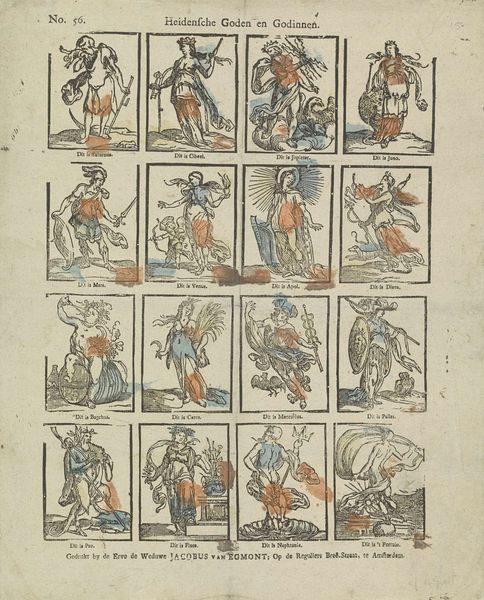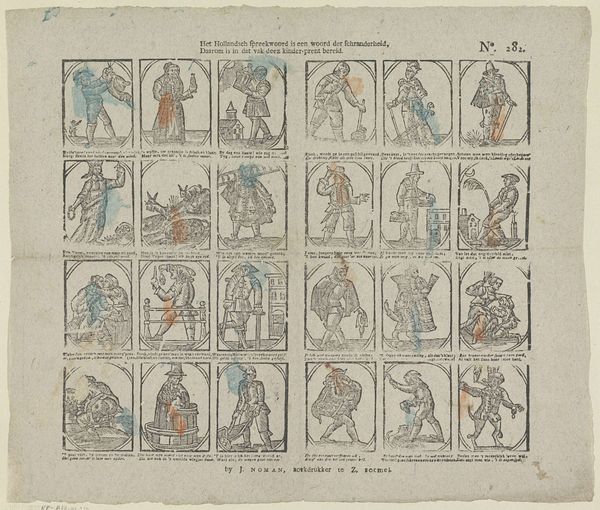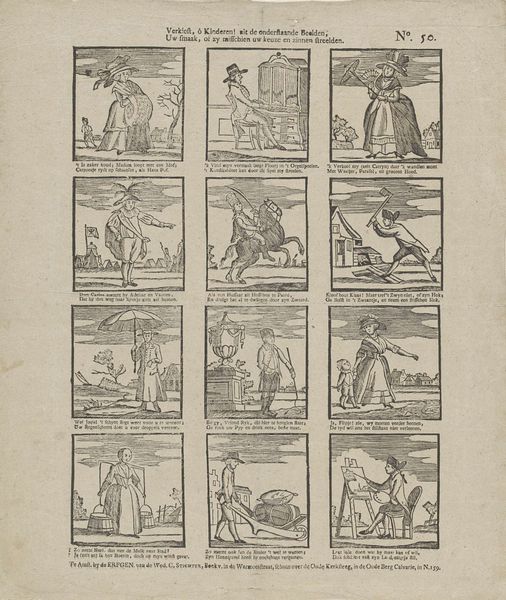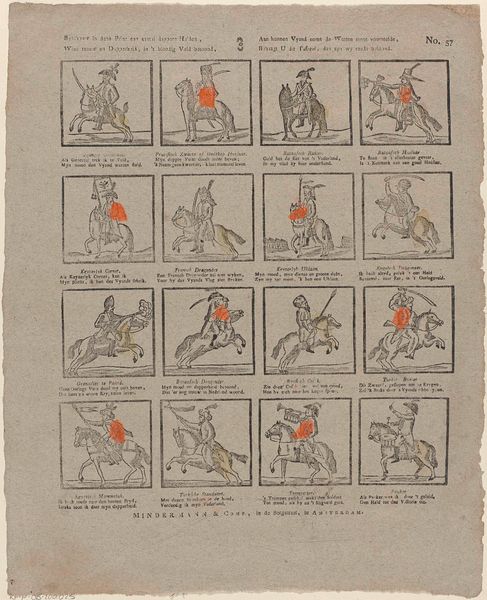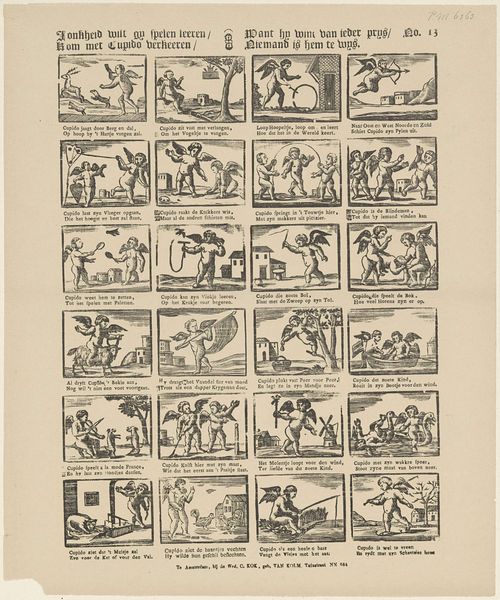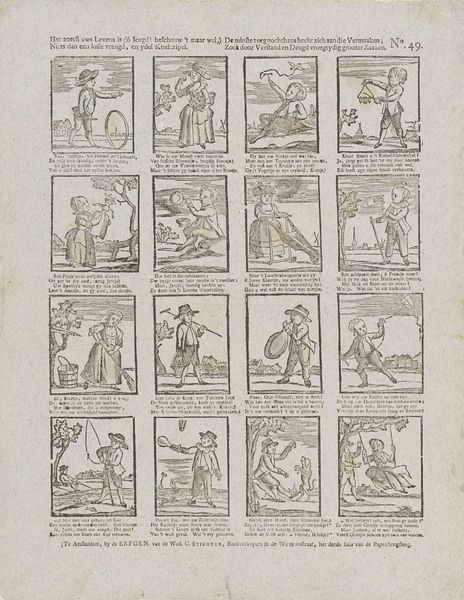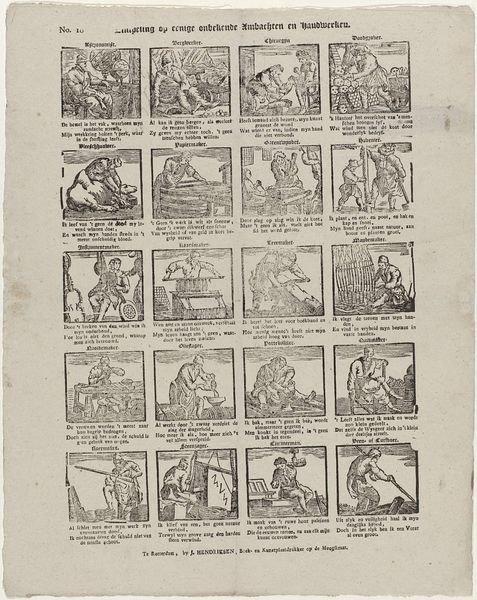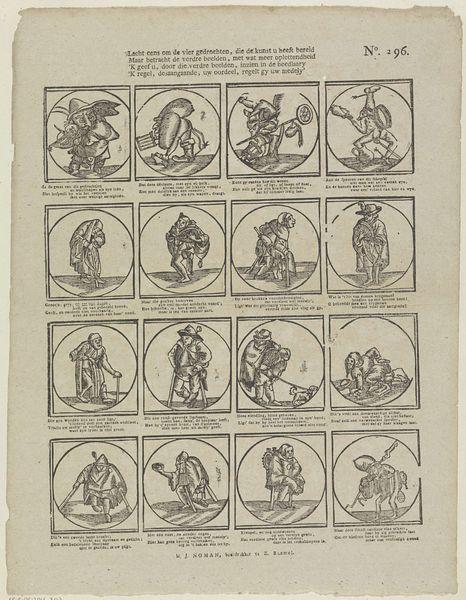
Hier is voor u, ô jeugd! die 't leezen staag beginnen, Te vinden nieuwe vreugd, / Van goden en godinnen, en wel voornaamst van dien, die de heidens gunste biên 1806 - 1830
0:00
0:00
johannoman
Rijksmuseum
graphic-art, print, engraving
#
graphic-art
#
neoclacissism
#
allegory
# print
#
figuration
#
engraving
Dimensions: height 420 mm, width 341 mm
Copyright: Rijks Museum: Open Domain
Editor: Here we have "Hier is voor u, ô jeugd! die 't leezen staag beginnen, Te vinden nieuwe vreugd, / Van goden en godinnen, en wel voornaamst van dien, die de heidens gunste biên," a print engraving dating between 1806 and 1830 by Johan Noman, currently housed in the Rijksmuseum. It's filled with all these different figures, and while it seems like an orderly grid, I can’t help feeling it chaotic. What do you make of it? Curator: Chaotic, perhaps! But is chaos not merely order we haven't yet deciphered? Each of these squares bursts forth, a playful performance, the stage filled with gods and goddesses vying for our attention, for our 'gunste,' as the text declares. Look at the figures--who strikes your fancy? Does stern Minerva's shield whisper tales of strategy? Or perhaps jolly Bacchus calls you closer for a merry wine tasting? Each vignette feels a glimpse into a boisterous Olympian party. Editor: I see, they're all individual stories contained in small rectangles like panels from a larger, grander narrative...sort of like a comic. Curator: Exactly! And like any great tale, there are layers. Consider the historical backdrop. Neoclassicism adored antiquity, these characters resurrected from forgotten myths... yet here they’re rendered in such playful, almost cartoonish simplicity. It tickles me. Almost winks! The artist knows he's drawing from old material and seeks to make something modern and amusing. The top translates roughly as 'Here is for you, O Youth, who love to begin reading, to find new joy, from Gods and Goddesses' It implies this is an alphabet of myth – or a set of examples – aimed for instruction but laced with entertainment! Did it work? Editor: It does, yes! It actually makes me want to dive into mythology. I thought Neoclassicism was mostly serious, somber paintings of emperors! Curator: Ah, that's what's so rewarding. Discovering those cheeky contradictions! I guess myths evolve with how we use them. Thanks to our journey among Gods and Goddesses! Editor: Definitely. I see now that looking closer and thinking about the historical moment is a doorway into truly getting the artist's intentions.
Comments
No comments
Be the first to comment and join the conversation on the ultimate creative platform.
